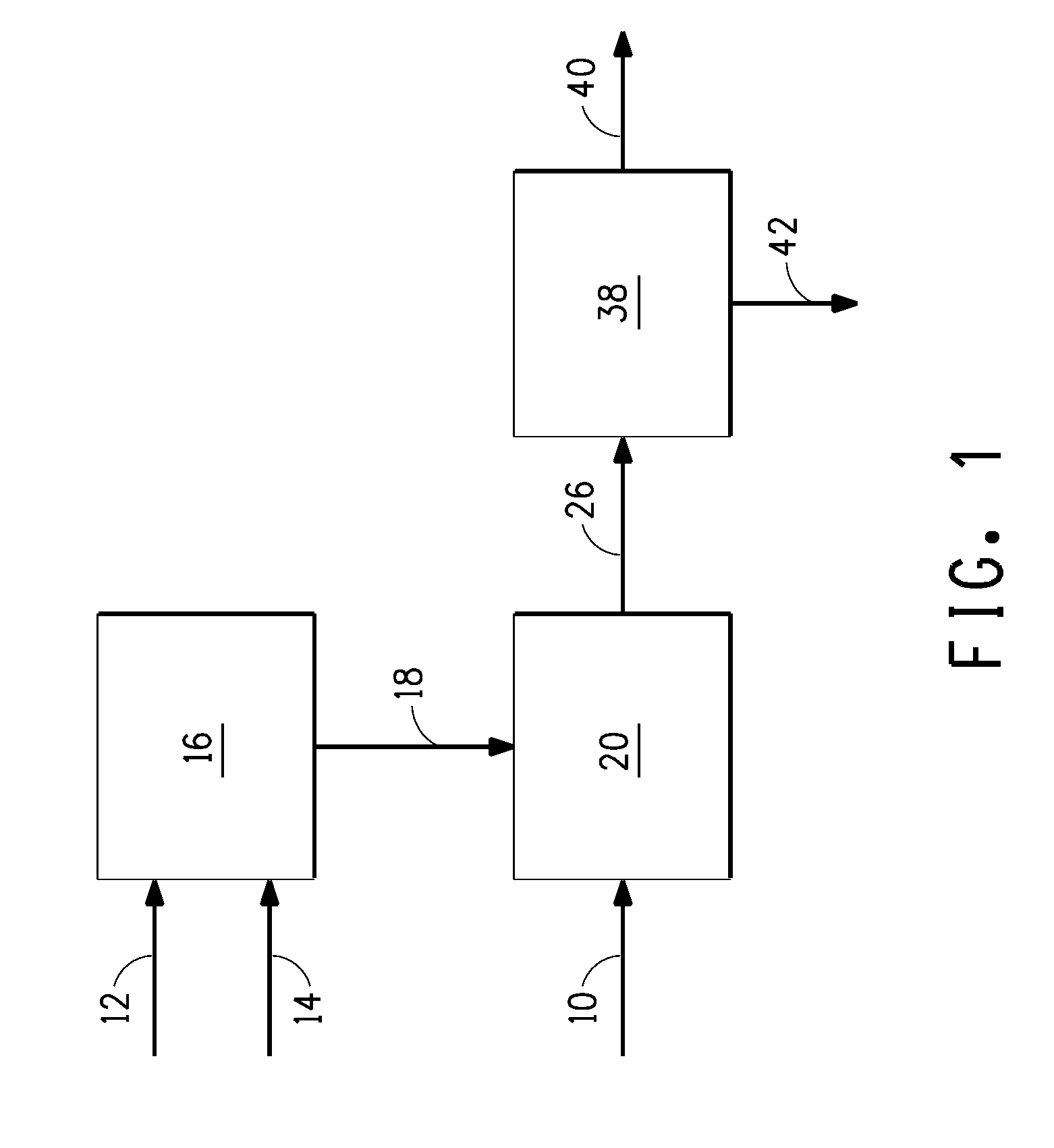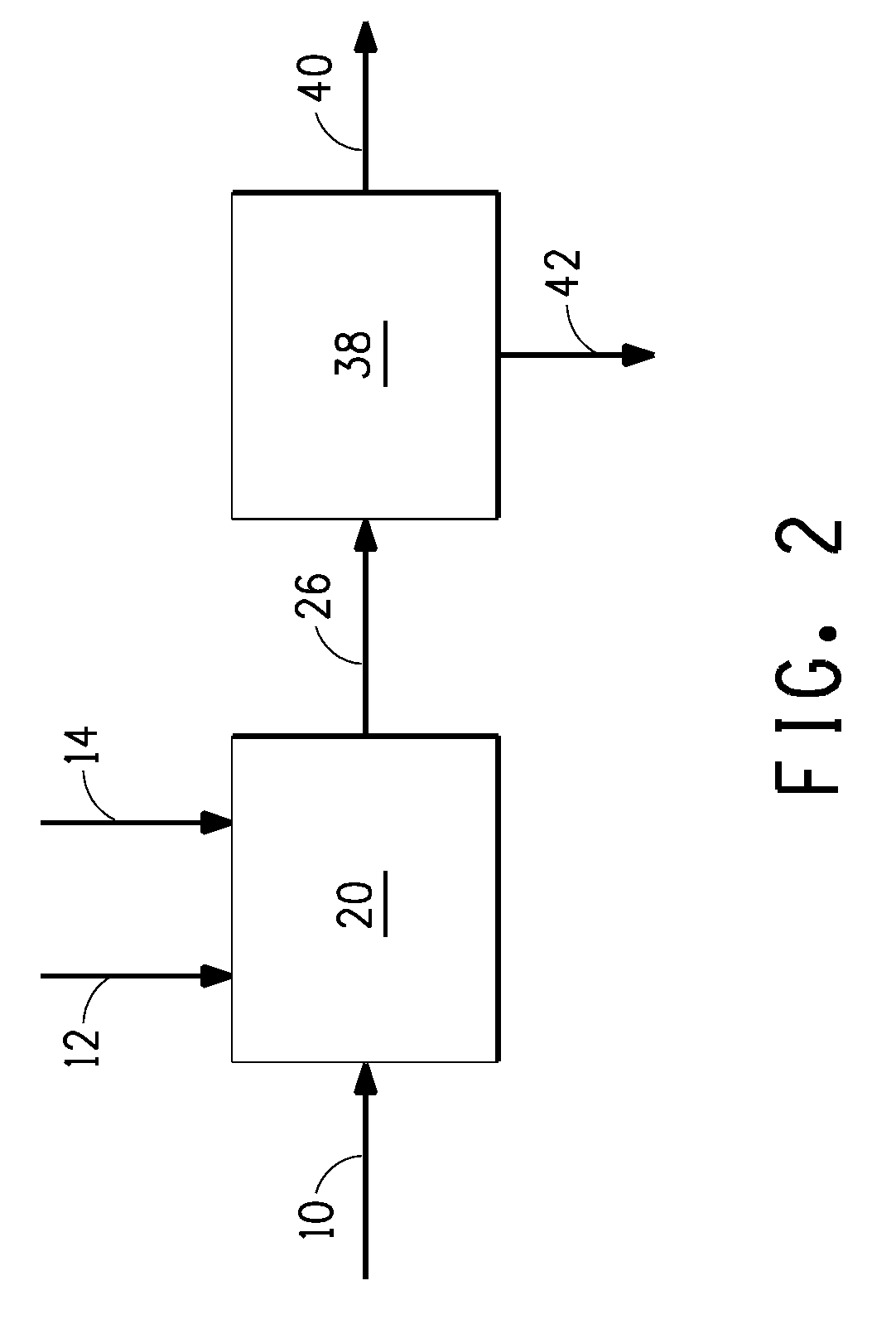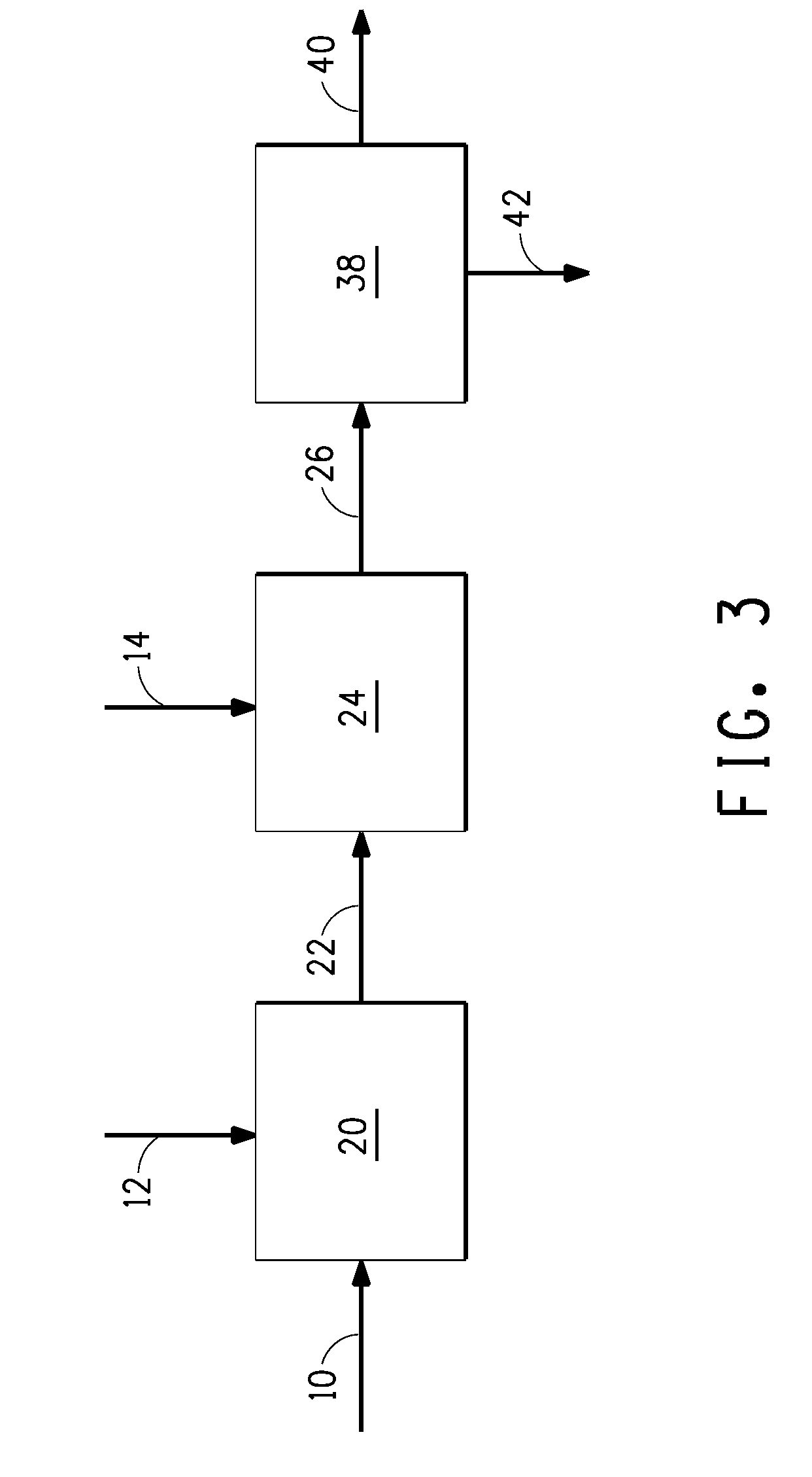Method for producing butanol using extractive fermentation with electrolyte addition
a technology of extractive fermentation and electrolyte addition, which is applied in the field of biofuels, can solve the problems of affecting the cell growth rate of osmotic cells, affecting the efficiency of osmotic cells, and requiring relatively high salt concentrations, so as to increase the butanol partition coefficient
- Summary
- Abstract
- Description
- Claims
- Application Information
AI Technical Summary
Benefits of technology
Problems solved by technology
Method used
Image
Examples
example 1
Effect of Electrolyte Concentration on the Partition Coefficient (Kp)
[0244]The purpose of this Example was to evaluate the effect of electrolyte concentrations in the fermentation medium on the partition coefficient (Kp) of isobutanol when oleyl alcohol was used as the extractant. The basal fermentation medium (BFM) typically used in E. coli fermentations was used as the fermentation medium in this Example. The BFM composition is shown in Table 2.
[0245]
TABLE 2BFM CompositionConcentration (g / L)ConcentrationComponentsor as indicated(millimoles / L; mM)Potassium phosphate13.397.73monobasicAmmonium phosphate4.030.28dibasicCitric acid monohydrate1.78.09Magnesium sulfate2.08.11heptahydrateTrace Elements (mL / L)10.0—Thiamine Hydrochloride4.5—(mg / L)Yeast Extract5.0—Sigma Antifoam 2040.20—(mL / L)Glucose30.0—
[0246]The trace elements solution used in the above medium was prepared as follows. Ingredients listed below were added in the order listed and the solution is heated to 50-60° C. until all t...
example 2
Effect of Electrolyte Supplementation on Growth Rate of E. Coli
[0254]To evaluate the effect of electrolytes such as Na2SO4 on growth properties of the biocatalyst, 4KO E. coli strain, was grown in shake flasks in BFM medium supplemented with 0.31 g / l of betaine hydrochloride and different levels of Na2SO4 (0-284 g / L) at 30° C., 250 RPM in Innova table top shakers. From a frozen vial, 25 mL of seed culture was grown in Difco LB broth, Miller medium, purchased from BD Laboratories (Becton & Dickinson and Company, Sparks, Md., 21152, USA) at 30° C., 200 RPM. 1 mL of this seed culture was added to shake flasks containing 30 mL of BFM medium supplemented with 0.31 g / L of betaine hydrochloride and varying levels of Na2SO4. Samples were withdrawn at defined time points to monitor biomass growth as measured by OD600. Growth rates were calculated from the biomass time profiles by fitting exponential growth rate equations.
[0255]
TABLE 5Effect of Na2SO4 on growth rate of 4KO E. coli strainTota...
example 3
Effect of Electrolyte Addition on Rate, Titer, and Yield of Butanol Production in a Two Phase Extractive Fermentation Process
[0257]The purpose of this example was to demonstrate the advantages of the addition of at least a sufficient amount of electrolyte to the aqueous phase of a two-phase extractive fermentation in which butanol is produced by a recombinant microorganism, a strain of Escherichia coli (NGCI-031) that contains an isobutanol biosynthetic pathway. The extractive fermentation uses oleyl alcohol as the water-immiscible, organic extractant.
[0258]The Escherichia coli strain NGCI-031 was constructed as described in the General Methods Section herein above. All seed cultures for inoculum preparation were grown in Luria-Bertani (LB) medium with ampicillin (100 mg / L) as the selection antibiotic. The fermentation medium used was a semi-synthetic medium supplemented with 2 mmoles / L of betaine hydrochloride, the composition of which is given in Table 6.
[0259]
TABLE 6Fermentation ...
PUM
| Property | Measurement | Unit |
|---|---|---|
| fill time | aaaaa | aaaaa |
| fill time | aaaaa | aaaaa |
| fill time | aaaaa | aaaaa |
Abstract
Description
Claims
Application Information
 Login to View More
Login to View More - R&D
- Intellectual Property
- Life Sciences
- Materials
- Tech Scout
- Unparalleled Data Quality
- Higher Quality Content
- 60% Fewer Hallucinations
Browse by: Latest US Patents, China's latest patents, Technical Efficacy Thesaurus, Application Domain, Technology Topic, Popular Technical Reports.
© 2025 PatSnap. All rights reserved.Legal|Privacy policy|Modern Slavery Act Transparency Statement|Sitemap|About US| Contact US: help@patsnap.com



